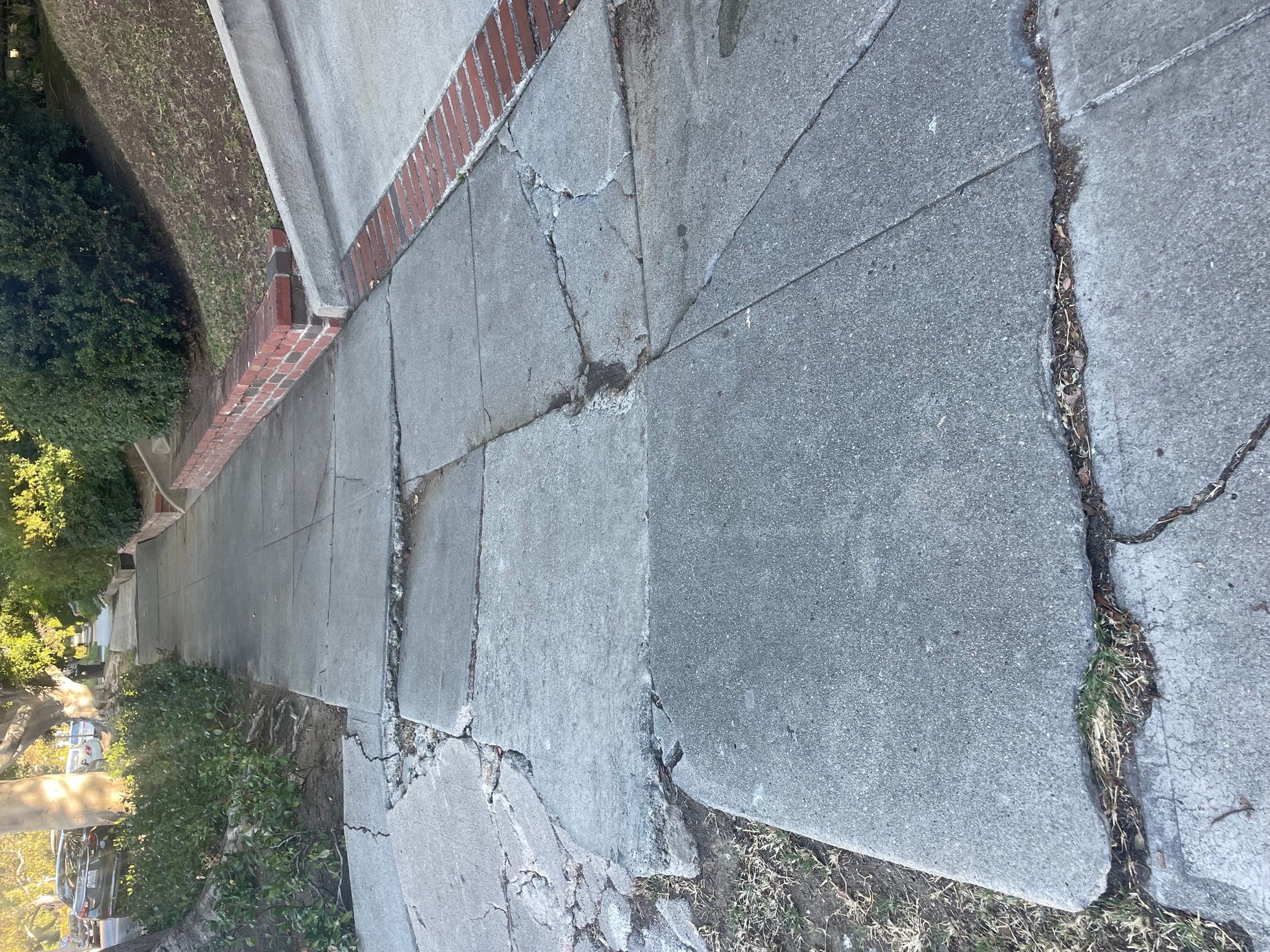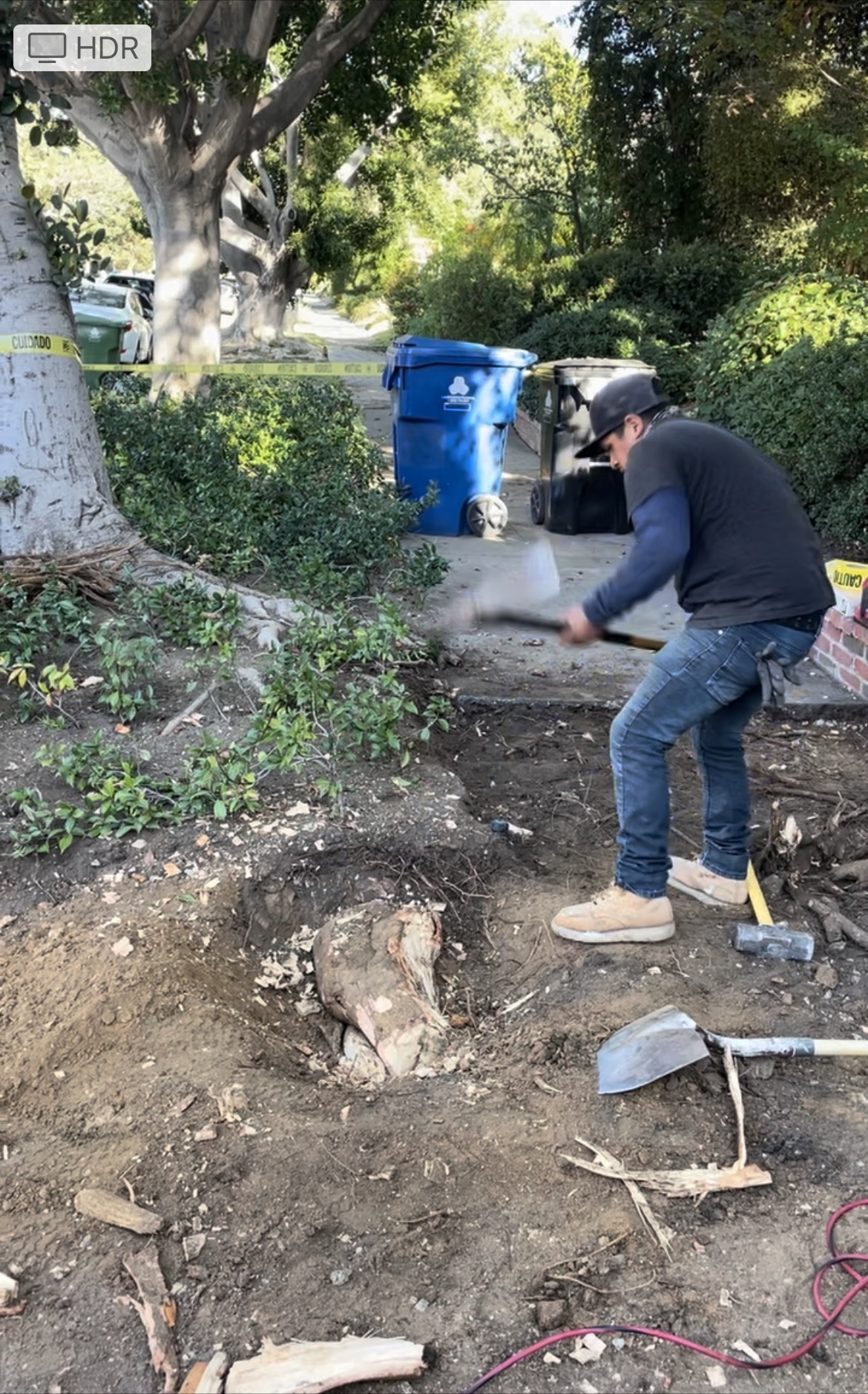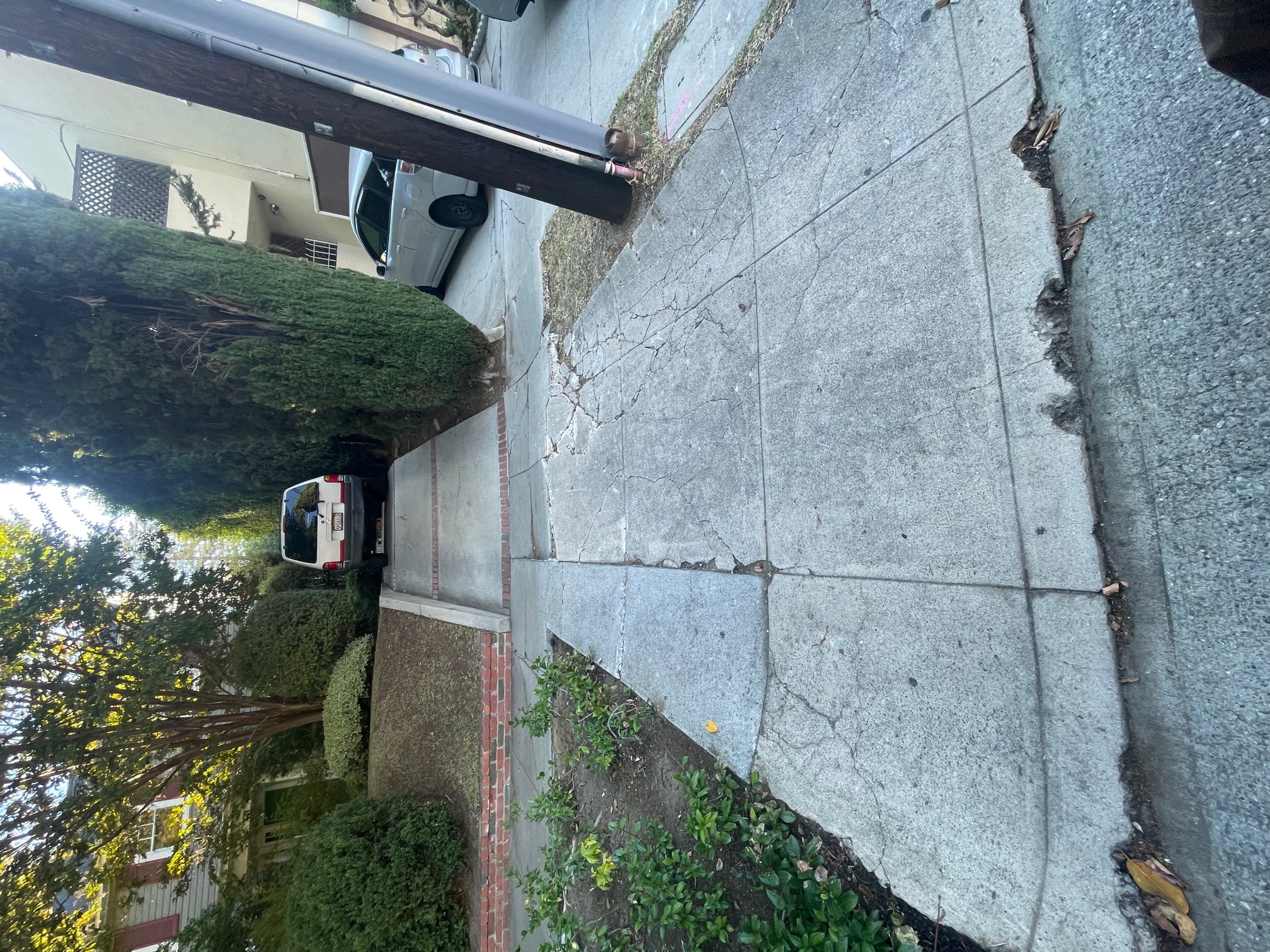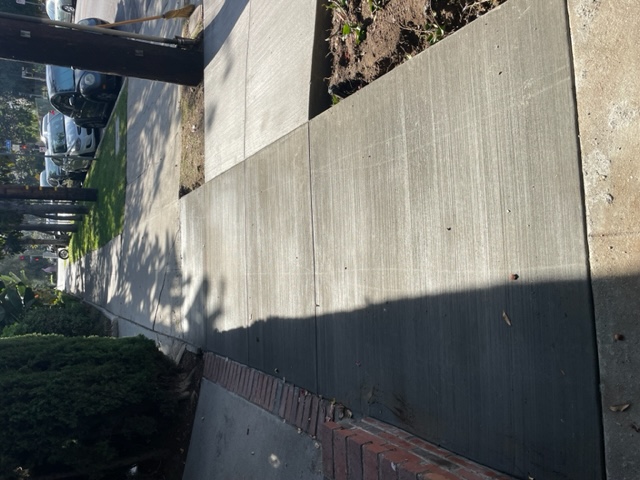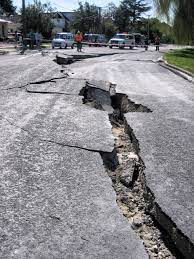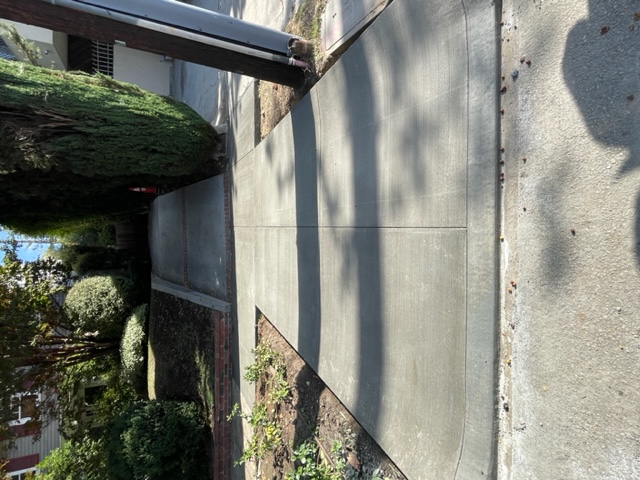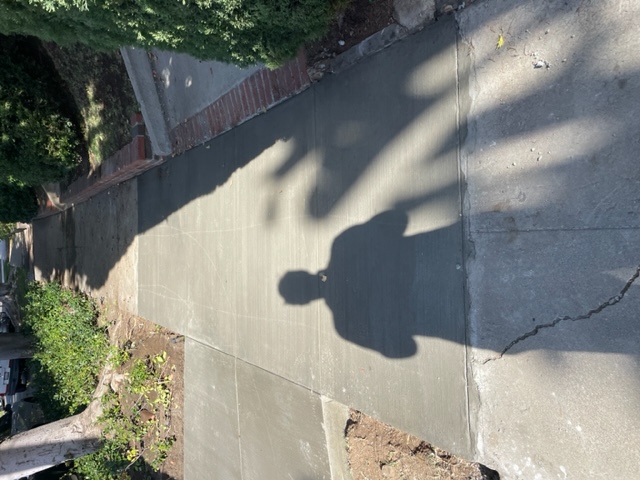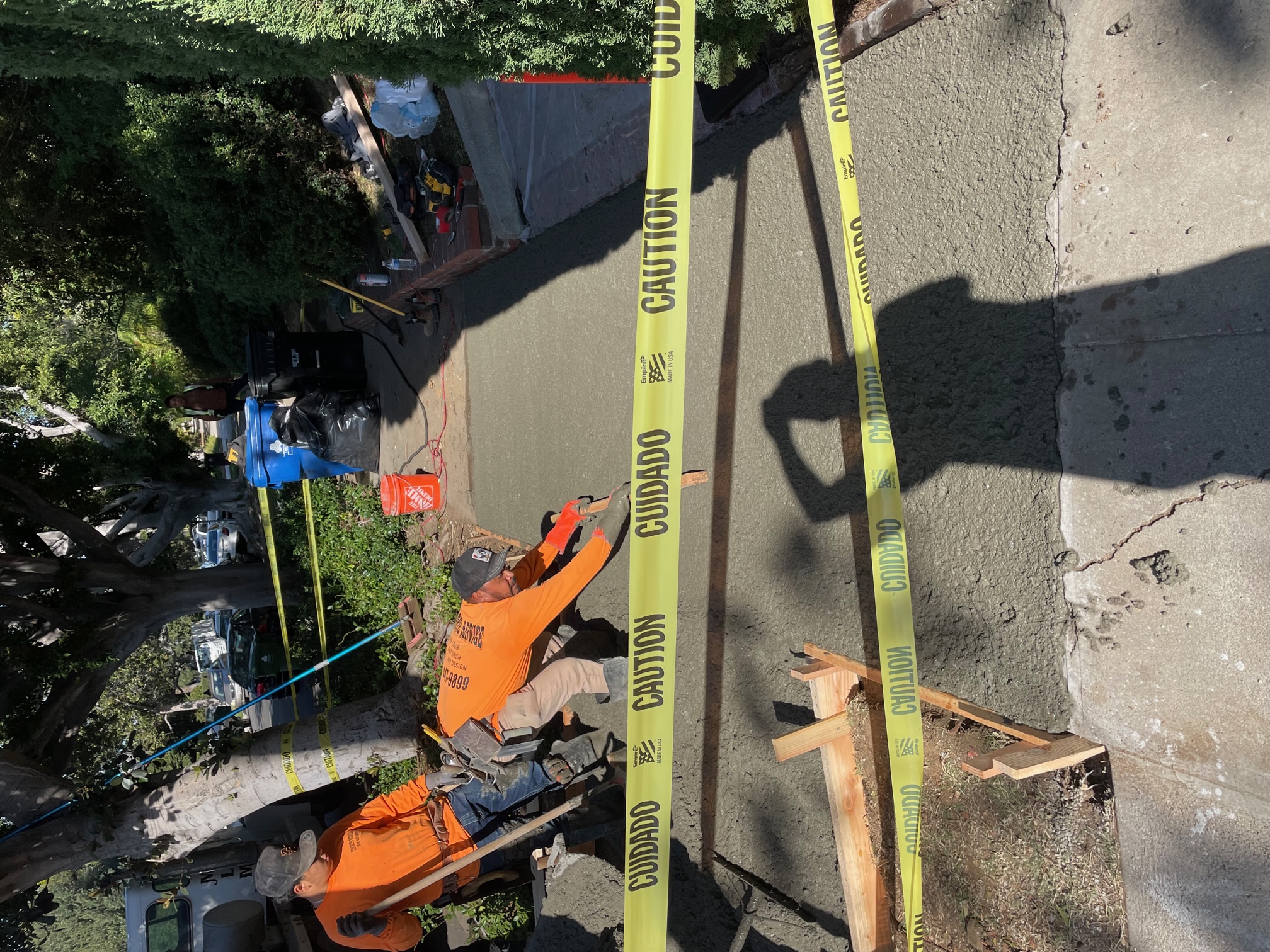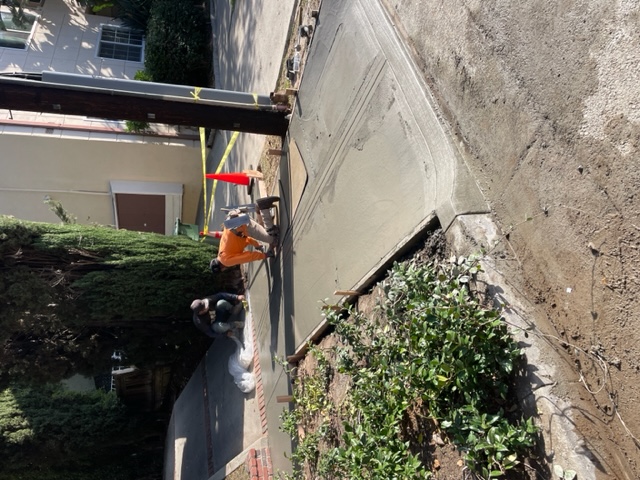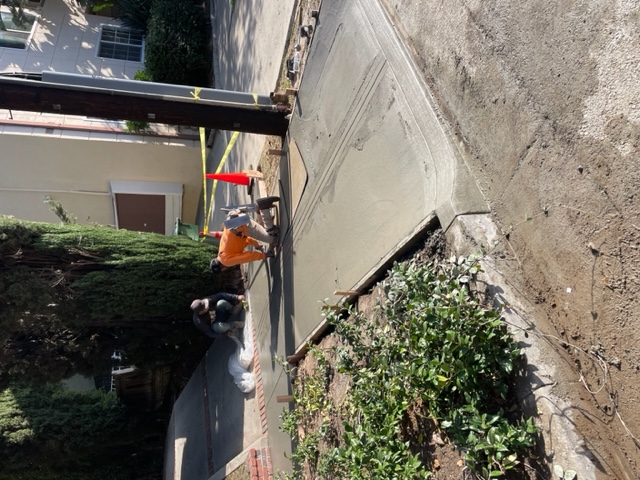Sidewalk Repair in Los Angeles

by Alonso Romero
CA State Lic. Concrete & Masonry C-8
CA State Lic. General Contruction - B
Buckaroo Banzai the Concrete Nerd
Actual person performing the job
Date: 12/20/2023
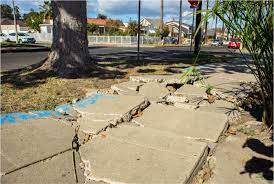
Walk anywhere in Los Angeles and you encounter the same problem – cracked and crumbling concrete sidewalks. Believe it or not, most neighborhoods in Los Angeles are over 50 years old – or older! – making these trip hazards a blight in our neighborhoods.
For homeowners, they can be even more of a headache. What happens if someone trips on the sidewalk in front of your home? Who is responsible for the sidewalk repairs anyway? The city? You?
Thanks to a relatively recent class-action lawsuit in Los Angeles, the city is required to spend up to $1.37 billion over 30 years to fix broken sidewalks, inaccessible curb ramps and other access barriers to pedestrian public right-of-way.
Great news, right? Now, let’s get that sidewalk fixed!
Why does the concrete sidewalk crack in Los Angeles?
Most neighborhoods in Los Angeles were built between 50 to 100 years ago, so it’s not surprising that our concrete footpaths have seen some wear and tear over the years. Did you know that there are at least 9,000 miles of sidewalks in the city of Los Angeles? With so many miles to manage, it’s not hard to understand why the walkways have been neglected over the years. However, there are some reasons why our concrete sidewalks are more prone to damage.
Trees and Plant Roots
What is the Number One culprit in damaged concrete sidewalks? Believe it or not, it’s our beautiful trees. Drive down any suburban Los Angeles street and you’ll see them – from the bright green ficus to the liquid amber trees turning vibrant red in the fall. Years ago, the city permitted developers to plant these types of trees. Why? The fast-growing, lush foliage lended an air of permanence to brand new neighborhoods. However, now the roots from those mature trees are ripping up our sidewalks.
Not only that, but trees from private lawns are also tearing apart our sidewalks. Remember, a tree is a living thing. It doesn’t follow the dictates of the property line. Roots go where the water is – even if that water is out into the middle of the street. Without proper pruning, those tree roots become hazardous to our public walkways.
Insufficient Reinforcement in the Concrete Sidewalk
Did you know that the first housing boom in Los Angeles was in 1887? The arrival of railroads ushered in a huge population explosion in Southern California (in fact, this is when Orange County broke off to be its own county). This first boom saw an acre of land go from $100 to $1500 in just one year. Some of these developments were only on paper (read more about Gladstone and other “paper towns” here), but many of them were real. Our older neighborhoods date from this period. In fact, McArthur Park was built in the 1880s and was known as the Champs-Elysees of Los Angeles.
Another huge housing boom followed in the 1920s, fueled by money in oil, entertainment and real estate. That housing boom saw a slew of construction with much more lax building codes than we have today. That made it possible for bungalow courts to be built next to single family homes and apartment blocks. That housing boom was followed up by another after World War II, which saw more planned residential neighborhoods built in the suburbs.
Given the age of much of the city, it’s no wonder that our sidewalks and driveway entrances are crumbling. Many of the homes were built before more stringent building codes. What does this mean for our concrete? Simply put, there isn’t enough reinforcement in our concrete, making our concrete more prone to damage.
Erosion Under the Concrete Sidewalk
Ahhh, Angelinos. We love our lucious, green lawns. Historically, we have also loved pouring concrete over natural waterways and creeks (LA River, anyone?)
What does this have to do with concrete? Water is concrete’s nemesis. Anytime water ends up underneath concrete, it erodes the soil underneath and undermines the stability of the concrete, leading to…you got it. Cracks and upheaval.
Imagine, if you will, you get a cracked sprinkler pipe. That water, then, saturates your lawn and creeps under the sidewalk and even your driveway. The water eventually flushes away the soil that the concrete rests upon, leaving a pocket of nothing. The concrete has nothing to rest on, so it cracks. And these cracks, when left unattended, just get worse and worse.
And we’re not just talking about busted water pipes. The past couple of years have seen the Los Angeles basin besieged by atmospheric rivers, dumping huge amounts of water on the city. This water has to go somewhere, and the somewhere it goes on the way to the street gutters, is through your lawn and underneath your sidewalk, taking with it the soil that’s holding up the concrete, meaning…more cracks.
Insufficient Joints in the Concrete
No, we’re not talking about your Aunt Linda’s knees. When we’re talking about concrete, joints are those lines carved into wet concrete before it fully dries. You’ve seen them on sidewalks, on driveways, on patios. They are actually crucial to the stability of any concrete walkway. Why?
Remember back in science class when the teacher was talking about how heat affects solids? Probably not, right? Well, when solids get hot, they expand. When they cool down, they contract. So, basically, during our hot summer months, the concrete needs room to expand. Those concrete joints – those lines cut into the concrete – allow the concrete to get bigger and smaller, without causing any cracks. Don’t have enough joints? The concrete doesn’t have anywhere to go and it cracks.
Moral of the story – when you do have your concrete replaced and new concrete poured, check and make sure your contractor has left groves in your new sidewalk. That way, it will last for decades.
Concrete Sidewalk Dried Too Fast
Another installation issue that can cause problems is concrete drying too quickly. You may be thinking, is it even possible for concrete to dry too quickly? The quick answer is, yes.
If your concrete is poured on a relatively pleasant, stereotypically 72 degree sunny day in Los Angeles, it’ll be fine. But, what if you have your new sidewalk poured during one of our many heat waves or Santa Anas? If it’s over 100 degrees out there, you need to baby your concrete. It has to be watered a couple of times a day for the first few days after it’s poured. Otherwise, the concrete will dry too quickly, become brittle and unstable and then you will end up with, yes, cracks.
Not only that, but you have to make sure you’re working with a licensed concrete contractor. Not every contractor has a license to work in concrete. This is crucial. Why? Concrete contractors know how to correctly install concrete. For example, on hot days, the site MUST be specially prepared before the concrete is poured.The soil must be soaked through the night, so that in the morning when the concrete is poured, the soil doesn’t absorb the water out of the concrete, causing the concrete to break. Only a licensed concrete contractor who studied the methodology of installing concrete will take the time to carefully prepare your site.
Are earthquakes destroying my concrete sidewalk in Los Angeles?
By now, you’re probably aware that Los Angeles is known for movies, bad sidewalks, and earthquakes. But, did you know that Southern California has at least 5-10 earthquakes every day? You won’t hear about it on the news, because most of the earthquakes register at about a 1.0. You’d be lucky if you even felt it. However, all that shaking can have an impact on our concrete sidewalks. Do these temblors have a huge effect? Not really. It would have to be a pretty large earthquake (4.0 or above) to really cause some damage to our sidewalks. Most of the damage being done to LA sidewalks is the work of tree roots. However, our little daily shakers can definitely shake up our sidewalks, as well.
Uneven Sidewalk Curb Repair in Los Angeles
So what are we to do about these deteriorating sidewalks? It’s a question that has vexed Los Angeles politicians for decades. Our sidewalks have been so notoriously bad for so long that it took a class action lawsuit for something to be done.
Part of the reason concrete sidewalk repair was so bad is because it wasn’t always clear as to who was responsible – the city or the homeowner. Willits vs. The City of Los Angeles remedied some of this and created a new city program – Safe Sidewalks LA.
What is Willits vs. The City of Los Angeles? In 2016, the city settled this class-action lawsuit that argued that the disrepair of the city’s sidewalks made public walkways non-ADA compliant. In other words, people with disabilities could not access public walkways because of the condition they were in. The city settled the lawsuit, providing about $1.37 billion to be spent on concrete sidewalk repairs over the next 30 years.
In short, If you're willing to wait upto a year, homeowners in the city of Los Angeles can get a rebate of up to $12,000 from the city to repair or replace concrete sidewalks, and even driveway entrances up to the homeowner’s property line.
Cement Sidewalk Construction Contractor in Los Angeles
So, you’re tired of your worn-out, crumbling, decaying, trip-hazard of a sidewalk and you’re ready to replace it. How do you go about doing it?
First, visit the city’s Safe Sidewalks LA website. There, you will find information about the rebate program and the application for the rebate. This handy infographic walks you through the process.
In short, you, the homeowner, will:
-
Apply for the rebate either on the city’s website or by using 3-1-1.
-
Be contacted by a city official for any additional documentation needed
-
Hire a licensed contractor (license A, C-8, C-12, C-61:D-06) after the city offers you a rebate. A contractor with a License B is NOT allowed to do this kind of work.
-
Pull the permits (You will need a Class-A Permit)
-
Meet with the contractor and a city inspector before and after construction
-
Submit a W-9 after construction is completed and approved by the city inspector.
The city has a list of FAQs to answer even more questions about the rebate process.
Sounds easy, right? It is if you hire the right contractor. You want to make sure you find a contractor who is familiar with the process, especially permitting, and with the correct license. Very few contractors have the correct license to do the work. Most contractors have a B Class license. So, when shopping around for a contractor, make sure you choose wisely.
Another consideration is time. Los Angeles, being the bureaucracy that it is, is taking up to a year to offer rebates to homeowners.
If you happen to need any help with your busted-up concrete sidewalk in Los Angeles, or you just want to get it fixed quickly, give us a call for a free quote.
